If you are visiting Richmond, you wouldn’t look twice at it. If you live here, you’ve probably been across it several times. With so many spans across the James River, it may seem inconsequential. But the bridge on 14th Street that connects RVA North of the James to RVA South of the James is carrying on the tradition of Richmond’s first, and for many years only bridge across the James in RVA: Mayo’s Bridge.
In the late 18th Century, the only way across the James was via Patrick Coutt’s ferry. Many people tried to start competing ferries, but were shot down by the Virginia Assembly. Finally, John Mayo, son of William Mayo who laid out Richmond 50 years prior, was given permission to build a toll bridge. At the time, people saw this as a pie-in-the-sky idea that would never work. One legislator compared it to building “a ladder to the moon.”
But to one with vision, it is merely a chip on their shoulder.
Then he became ill and died.
Have no fear would-be river crossers! John Mayo Jr. who inherited his fathers estate would take those plans and, with permission from the General Assembly of course, would seek to fulfill his father’s vision. In 1788, after years of financial hardship, including several stints in debtor’s prison, Mayo completed his erection. According to Samuel Mordecai in his book Richmond In Bygone Days, the bridge was originally constructed of “large logs, raft-like, spiked to the rocks, with rough floor laid on the logs” out to Mayo’s Island on which stood the toll booth. The island was connected to Manchester (now South Richmond) via a “bridge of boats.” This bridge of boats is also known as a pontoon bridge which is a series of shallow boats tied together with rope and wood planks. The fishermen of the city loved it.
At an outrageous (at the time) six-and-a-quarter cents per person, per horse, and per wheel, John Mayo Jr. would gather a sizable fortune from the tolls from his bridge. He would need this fortune to keep rebuilding it as the river wrecked the it again, and again.
The first instance was a few months after the bridge’s completion. The river froze from bank to bank. Upon thawing, large chunks of ice and floods destroyed most of the bridge.
It was rebuilt.
And wrecked again in 1814. Then again in 1816. And again in 1823. High water kept carrying parts of the bridge away, but they kept rebuilding.
This would lead to some amusing anecdotes. Samuel Mordecai writes in his book:
On one occasion, when the floor of the bridge had been taken up for repair, and the large sleepers remained, the keeper of the toll-gate on the Island was aroused one dark night and to his astonishment, found not only a man but also a horse waiting to pass. ‘For God’s sake, how did you get here?’ he asked.
‘By the bridge, to be sure; how else should I?’ replied Mr. Isham Randolph.
‘No other man could have done it,’ said the toll-taker ; ‘the floor is taken up.’
‘Well,’ said Mr. R., ‘floor or no floor, I rode here, and now I’ll pay my toll.’
‘Pass on, Mr. Randolph; I wont take toll from a man who rides where there is no bridge.’
When the Confederate forces fled the RVA after the fall of Petersburg in April of 1865, hundreds of citizens crossed Mayo’s bridge either by foot, horse, or buggy. , When the last of Lee’s retreating Confederate forces made it across the bridge, it was burned to prevent Union forces from pursuing.
The span would be rebuilt again….. and again thwarted by the violent James in the great flood of 1870. It was rebuilt again, but this time!…….
….it washed away during a flood in 1877.
And again in the great Blizzard of 1899.
In 1913, 5 years after Manchester (now South Richmond) was annexed by RVA and turned into Washington Ward, the powers that be decided that they would probably need a slightly sturdier span to connect the two parts of the City and funded the construction of new bridge made of steel and concrete with modern techniques.
During a flood in 1971… the bridge was submerged, but remained standing after the water cleared. It still stands today as 14th Street Bridge.

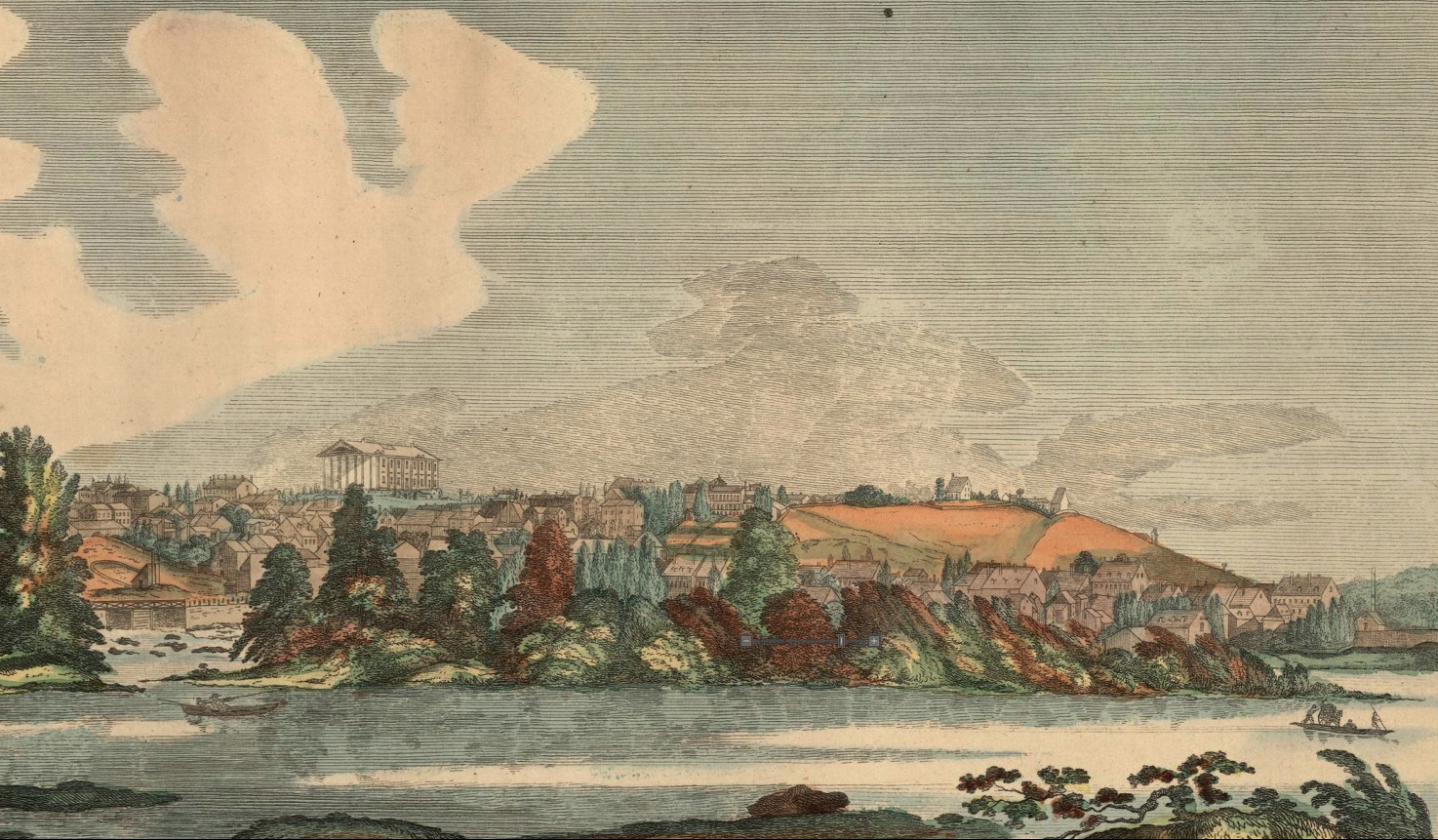
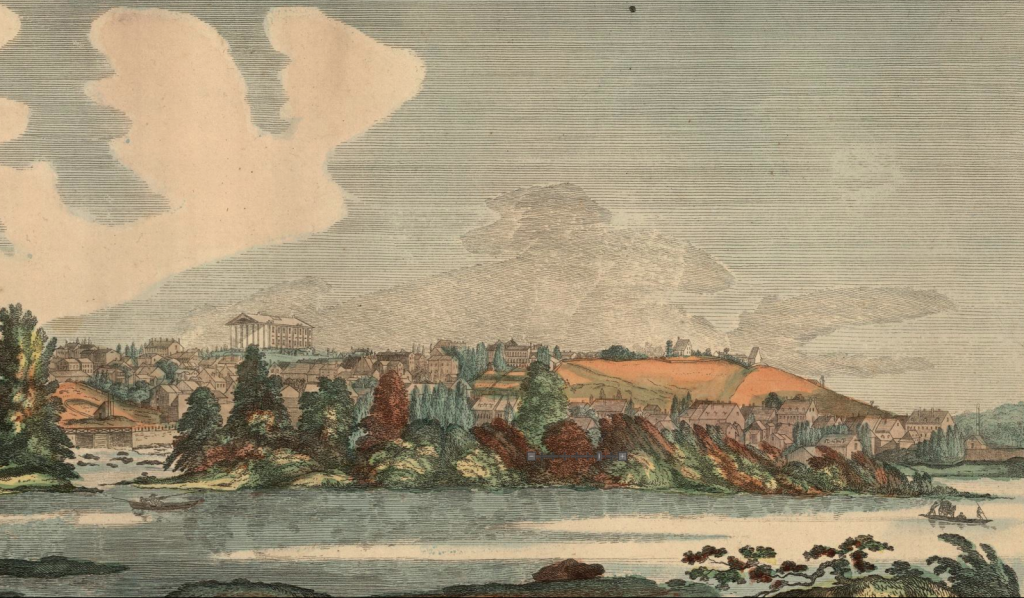
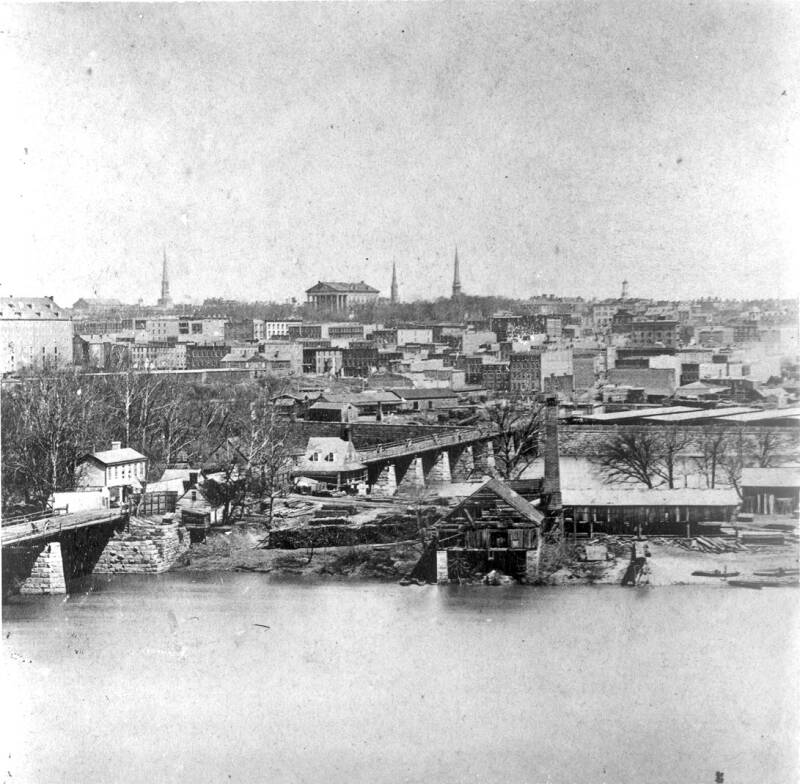
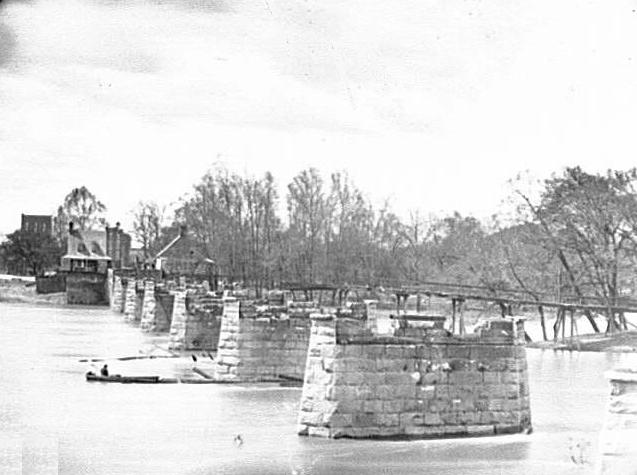
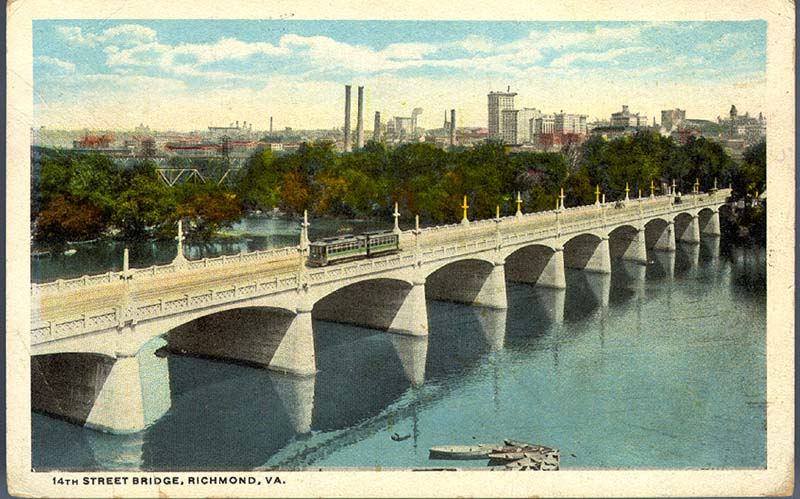
Very good informative writing. Enjoyed it very much. I was working with SCL RR at the time of 1971 flood. We crossed RR bridge over Mayo Island during flood before river reach high point. Water was up close to track on south end of bridge. Remember it very well.